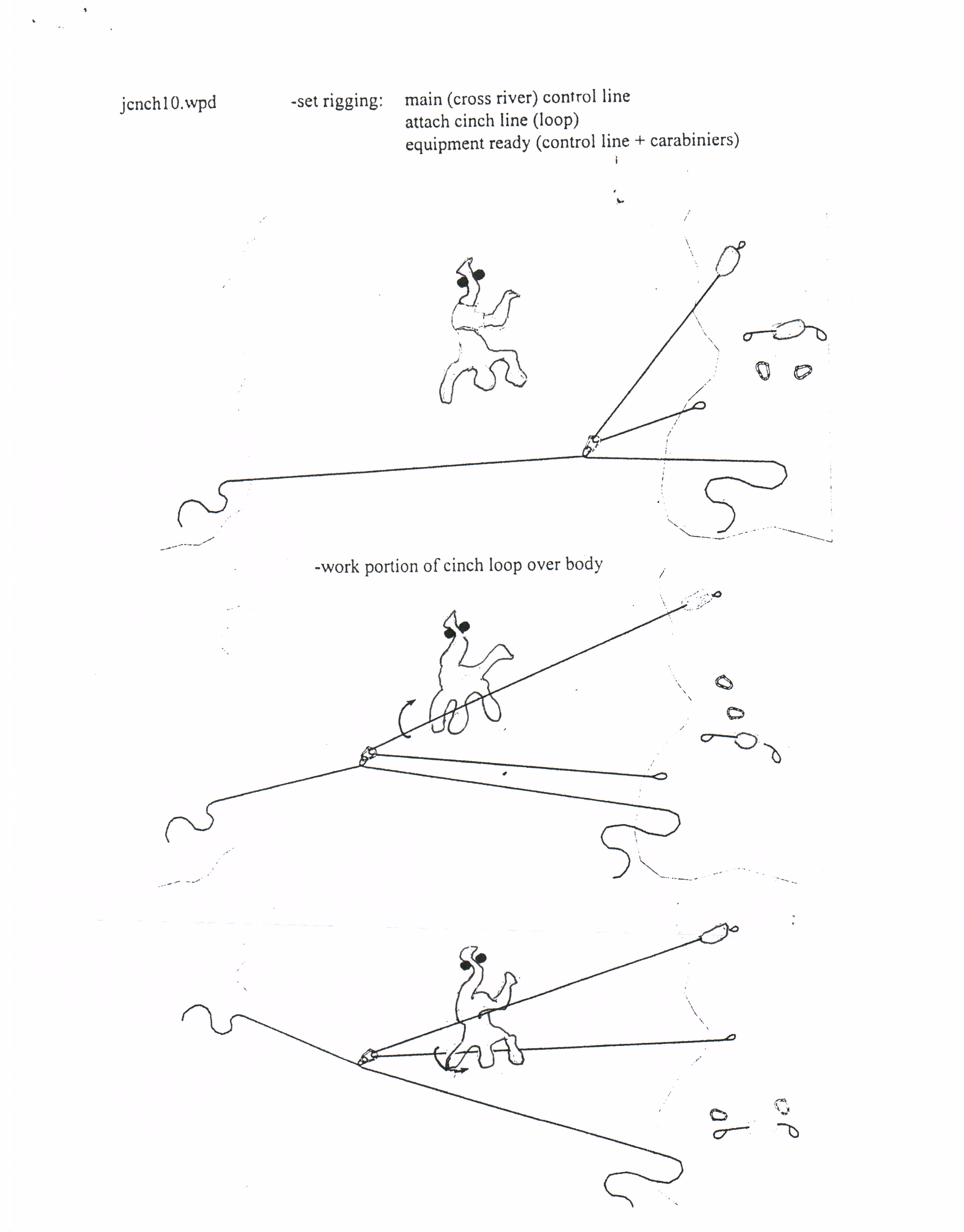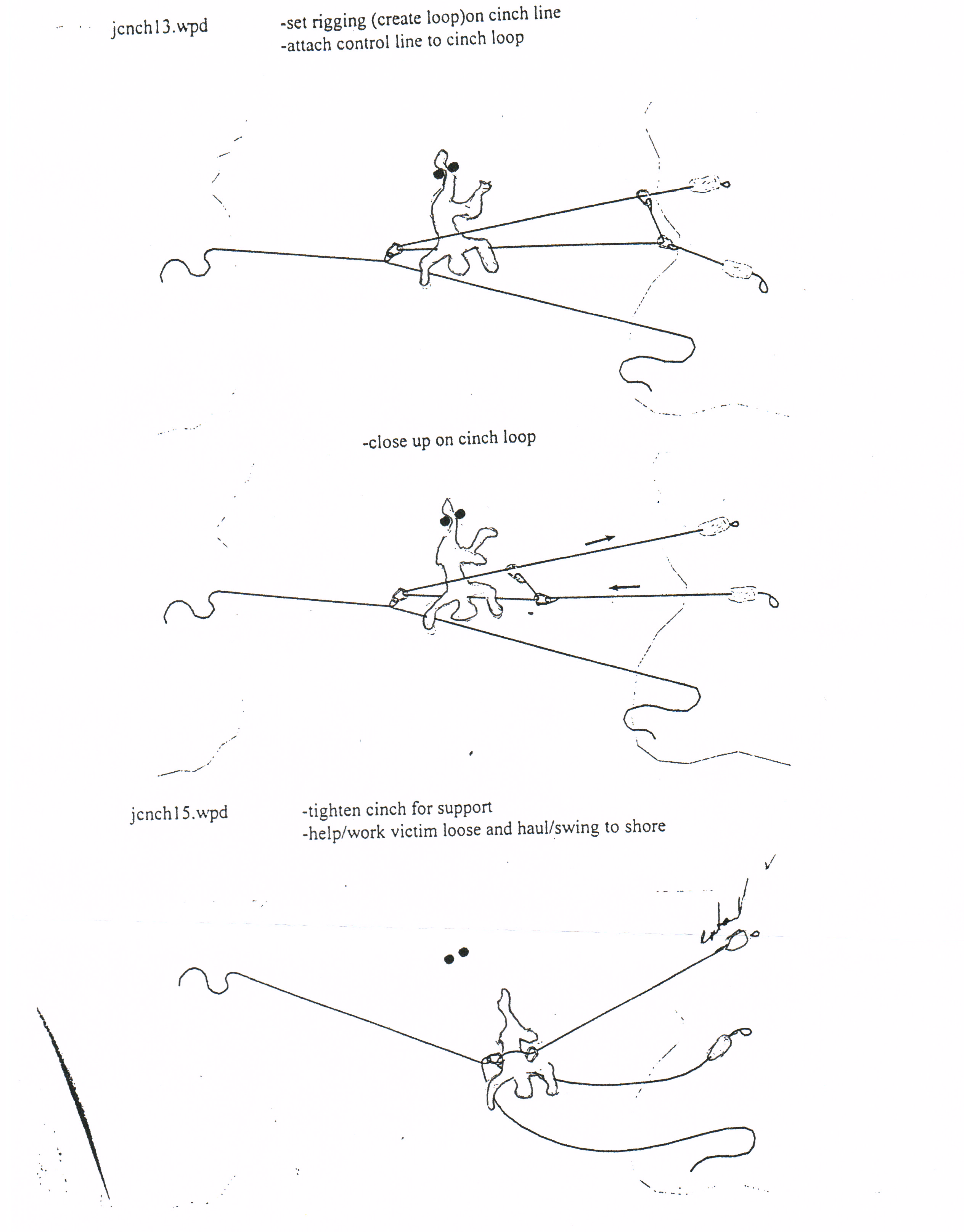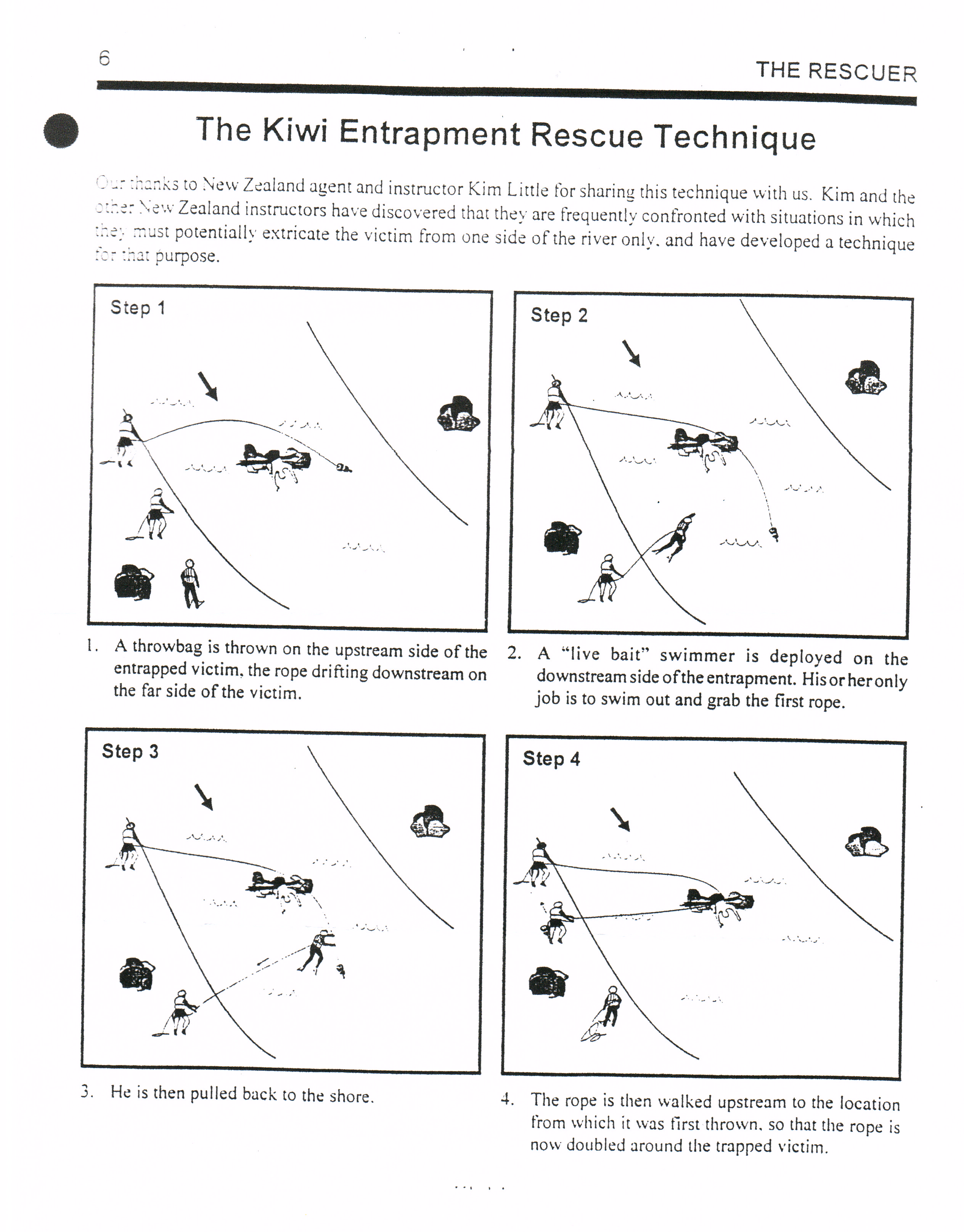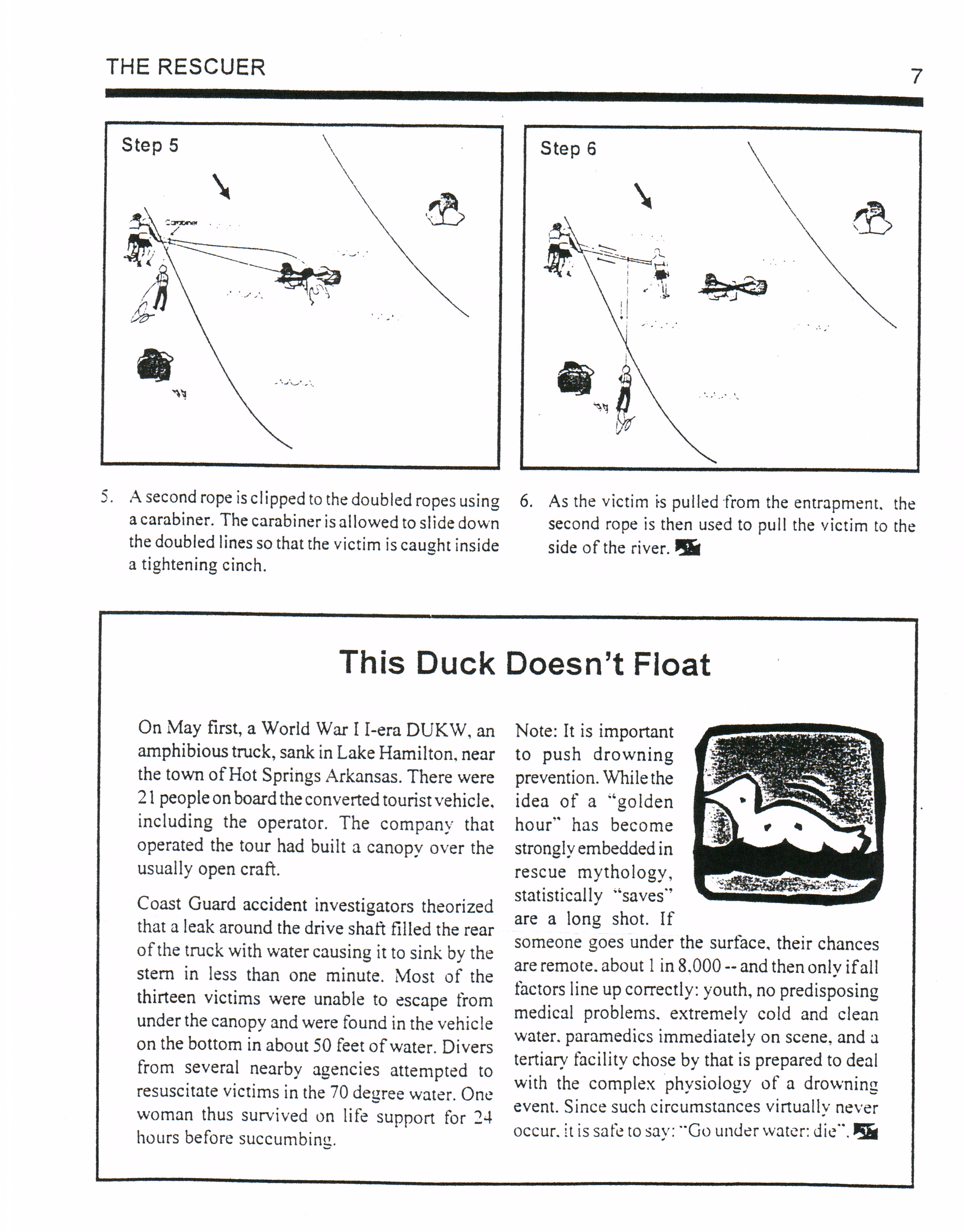A cinch line can be quite handy for freeing a pinned boat (or even a trapped paddle). The cinches are great for controlling movement of the object back to shore as well. This is very similar to the fine control provided by a V-Lower. In a few cases, a cinch line may be needed on a trapped paddler as well but should only be used with some care since it may choke down on the paddler and cause severe injuries. When using on a paddler, cinches that provide a means of controlling the loop tightness are preferable to closed cinches. On the plus side once you have the trapped paddler in a controlled loop, controlling their position and movement is pretty easy.
There are a number of cinch techniques available. The ACA concentrates on a few that reinforce good practices like deep V's and use of stabilization lines. These cinches with a little bit of practice are easy to remember and construct in the field.
The following video shows a very simple cinch line set-up: Simple Cinch - Don't Do This!. Although this cinch is very easy to understand and set-up, it provides zero control on how tight the loop gets. It would be very difficult for the victim to quickly escape if they got pulled underwater, a very definite possibility if they came out of their boat in fast water. This approach is fine for gear retrieval but not people. The ACA teaches far better cinch techniques as described below.
This is a far better variation of a simple cinch that also provies a great deal more flexibility: Open Simple Cinch. Another useful cinch is what the ACA calls the Closed Simple Cinch: Closed Simple Cinch. Here are some step-by-step articles: Simple Open Cinch, Simple Closed Cinch.
A very simple cinch technique courtesy of Jim Coffey is the ET3 Cinch (shown at the 3:20 mark). This cinch is very quick to deploy under the right conditions. These are the step by step instructions for the ET3 Cinch.
A very good cinch technique is the Carlson Cinch. This cinch technique assumes you have already set-up a stabilization line and tried a foot snag line rescue - always wise to try first. The following PDF provides a great explanation on this technique: Carlson Cinch.
The J Cinch is another variation on cinch lines that scissor the victim. Here is a diagram on this technique:
 |
 |
Most cinch lines scissor the victim from both sides of the river. What if you lack access to the other side? Perhaps there is a rock wall on the other side and no wear to stand - now what? A New Zealand instructor Kim Little demonstrated a great cinching method that is quick and easy to set-up called the Kiwi Cinch. The following diagram provides step-by-step instructions on this valuable technique. Here is the Kiwi Cinch in action: Kiwi Cinch Demo.
 |
 |
Another excellent cinch is the Shrinking Loop Cinch. The beauty of this cinch is great control in placement and very fast implementation. Here is a demo: Shrinking Loop Cinch.
As with all cinching techniques, try them out at home in controlled and non-threatening exercises. Although they certainly have their safety challenges, with proper understanding and practice they are quite valuable in entrapment rescues.
